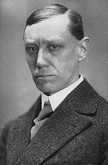
Nosferatu, eine Symphonie des Grauens (1922)
Nosferatu, a Symphony of Horror / Terror of Dracula / Nosferatu / Nosferatu, a Symphony of Terror

Raiting: ![]() 7,9 /10
7,9 /10
Genre: Fantasy
Director: F.W. Murnau
Stars: Max Schreck, Gustav von Wangenheim and Greta Schröder
Country: Germany
Release date: 16 February 1922
Length: 96 minutes
Top cast - Nosferatu, eine Symphonie des Grauens (1922)

Alexander Granach
Knock

Max Nemetz
Captain

Wolfgang Heinz
1st Sailor
